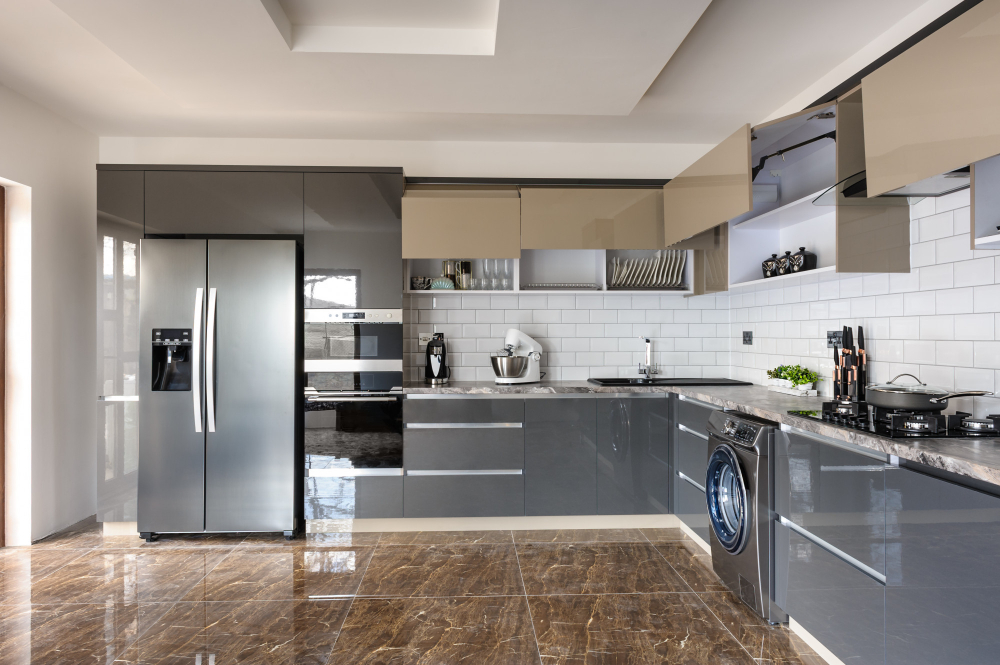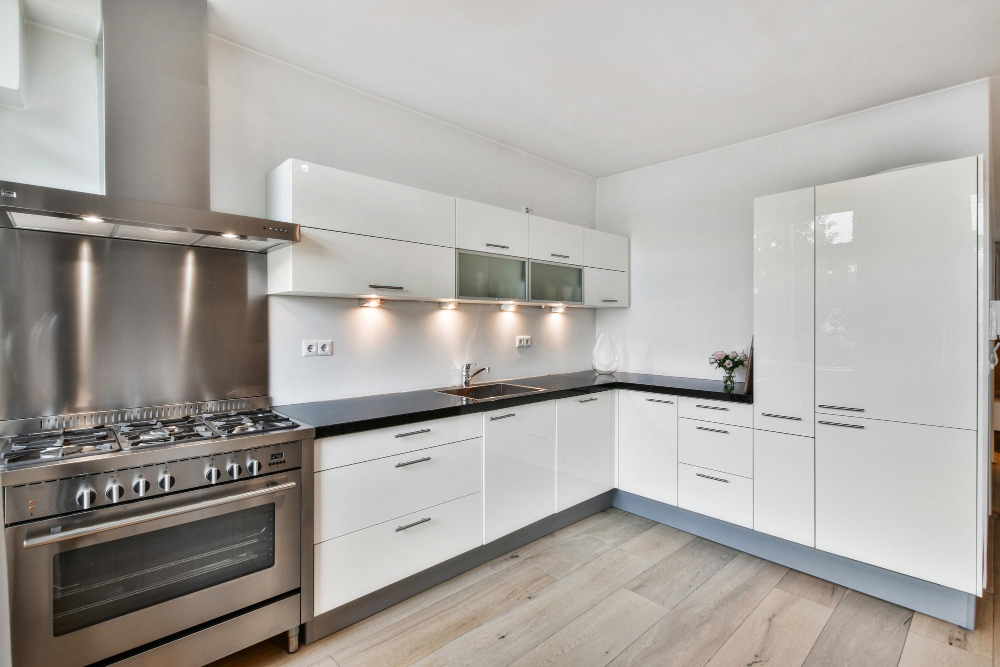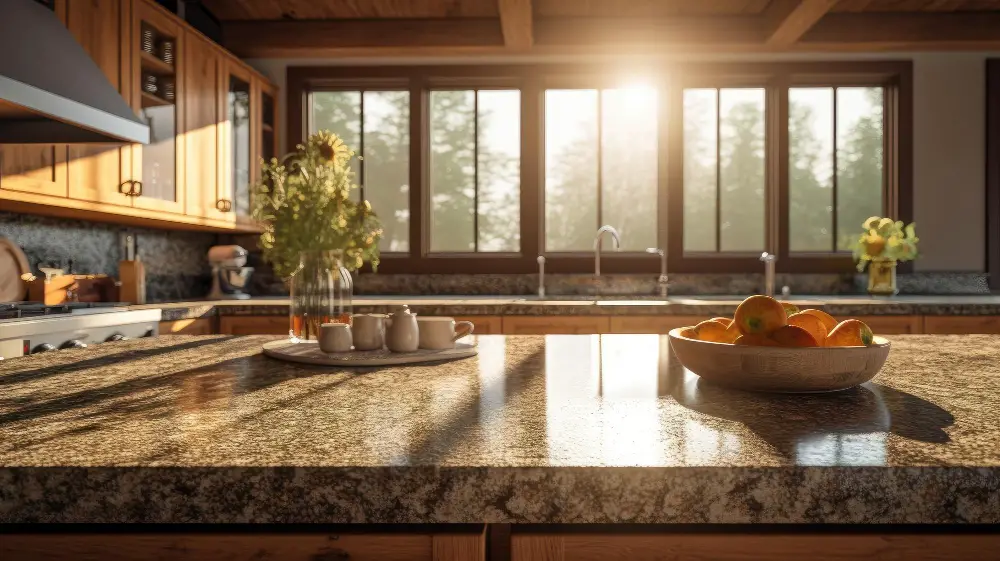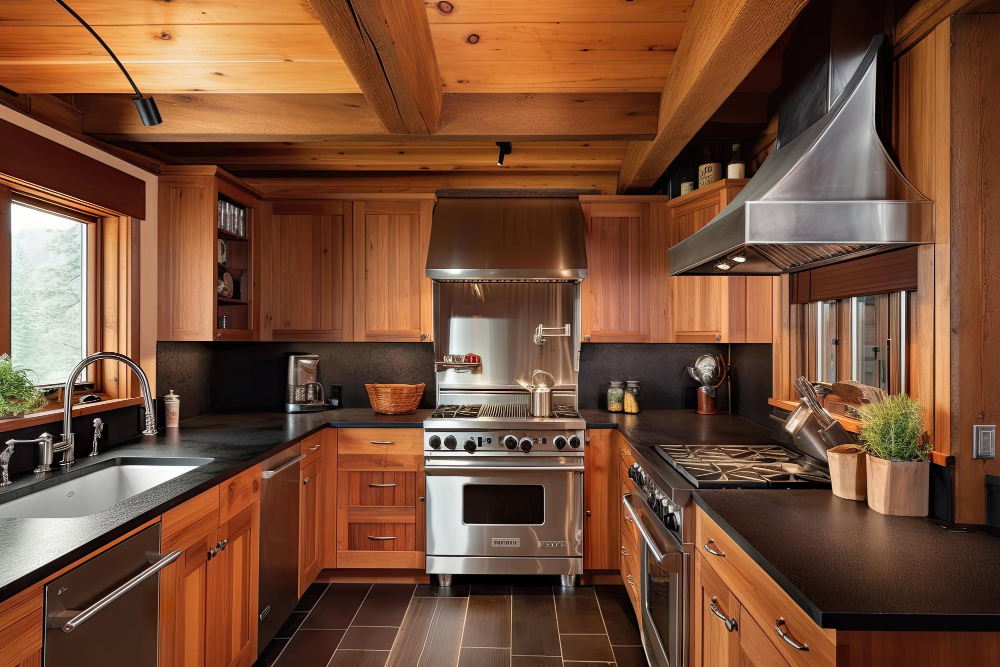Last updated on
Uncover the impactful role of kitchen cabinet colors on your home’s aesthetics and ambiance and discover how to select the perfect shade according to your design preferences.
Key takeaways:
- Bright and bold hues add energy and personality to kitchens.
- Lighter colors promote serenity and create an open feel.
- Consider lighting, countertops, and resale value when choosing colors.
- Two-toned kitchens can create balance and visual interest.
- Maintenance varies depending on color and finish.
What's Inside
Current Trends in Kitchen Cabinet Colors

Bright and bold hues, once a rarity in kitchen design, now find their place in modern homes, infusing energy and personality. Think cobalt blue or sunny yellow; these shades can transform cabinets into focal points.
Whites and grays remain popular for their clean, timeless appeal, supporting a minimalistic and open-space feel. Soft pastels, such as sage green or blush pink, lend a touch of warmth and create a welcoming atmosphere.
For those seeking the classic elegance of natural materials, wood finishes are experiencing a resurgence, with walnut or richly stained oak offering depth and organic beauty. Matte finishes are favored over high gloss, providing a sophisticated and contemporary look that minimizes the appearance of fingerprints and smudges.
Remember, the selected color not only reflects personal style but also sets the tone for the entire kitchen.
The Impact of Color On Kitchen Aesthetics and Mood
Understanding the psychology of color can transform a kitchen from a mere cooking area into a space that exudes a desired ambiance. Lighter hues, for instance, like soft blues and greens, promote serenity and can make small kitchens feel larger and more open. Meanwhile, stark whites are often chosen for their timeless quality and the way they can create a clean, airy feel.
Conversely, darker colors like deep navy or charcoal can give a kitchen a more sophisticated, dramatic touch but may also make the space feel more enclosed. Warm tones such as reds and yellows can stimulate the appetite and create a welcoming atmosphere, ideal for a place where friends and family gather.
Furthermore, color can also affect practicality. While a pristine white kitchen exudes cleanliness, it also shows dirt and stains more readily than darker or patterned options. Each color you consider for kitchen cabinets carries its own set of emotional and practical implications. It’s important to weigh these when deciding on your kitchen’s palette to ensure the space meets both your aesthetic taste and lifestyle needs.
How to Choose the Right Color for Your Kitchen Cabinets
Selecting the perfect hue for your cabinets involves balancing personal taste with practical considerations. Here are key points to keep in mind:
- Reflect on Your Space: Lighter colors make small kitchens feel more spacious, while darker tones bring warmth to larger areas.
- Consider Lighting: Natural light can dramatically alter a color’s appearance. Observe your kitchen’s lighting at different times of the day to predict color variations.
- Coordinate with Countertops: Your cabinets should complement your countertops. Neutral-colored counters offer flexibility, while bold counters might need a subdued cabinet color to balance the look.
- Resale Factor: If you’re planning to sell your home, neutral cabinet colors typically appeal to a broader range of buyers.
- Longevity: Trendy colors can date your kitchen quicker. Classics like white or gray sustain visual appeal over time.
- Finish: Gloss, satin, or matte? Each finish affects the color perception and maintenance requirements.
By weighing these considerations, you’ll find a color that not only suits your tastes but also enhances your kitchen’s overall charm and functionality.
Combining Cabinet Colors: Tips for a Two-Toned Kitchen
Embracing a two-toned kitchen requires thoughtful consideration to ensure harmony and balance. Here are key points to guide you through the process:
- Contrasting Upper and Lower Cabinets: A classic strategy for a two-toned effect is to select darker hues for lower cabinets and lighter shades for upper cabinets. This anchors the space while keeping it open and airy.
- Island as a Focal Point: If your kitchen has an island, make it stand out by painting it a different color from the rest of the cabinetry. This not only adds visual interest but also creates a central point in the kitchen.
- Use of Neutrals: Integrating neutrals with bold colors can soften the impact of the latter. A muted gray paired with a vibrant blue can bring balance without dulling the bolder shade’s impact.
- Material Mix: Combining painted cabinets with natural wood can impart texture and warmth. Consider which materials reflect your personal style and the overall ambiance you aim to achieve.
- Consistency with Hardware: Consistent use of hardware materials and styles can unify the look of varied cabinet colors. Whether you choose sleek, modern pulls or classic knobs, ensure they complement both color choices.
- Cohesion Through Accents: Employing accessories and kitchen textiles that echo your cabinet colors can help to tie the room together. These elements serve as subtle links between the different tones in your cabinetry.
Remember, the key to a successful two-toned kitchen lies in creating a deliberate and cohesive design. With these tips, mixing cabinet colors can elevate the look of your kitchen, adding depth and character to the heart of your home.
Maintenance and Durability of Colored Cabinets
Understanding the practicalities of colored kitchen cabinets is as crucial as choosing the right hue. Darker shades, such as navy blue or charcoal, tend to do an excellent job at hiding smudges and stains, making them ideal for high-traffic kitchens. Conversely, lighter colors like white or pale gray require more frequent cleaning but can make spaces feel larger and more open.
Certain finishes, particularly matte or flat, are notorious for requiring extra effort to maintain their pristine appearance. If you love the look but dread the upkeep, consider a satin or semi-gloss finish that allows for easier wipe-downs.
For those concerned about long-term wear, invest in a high-quality paint designed for cabinetry. These products often have hardeners added to increase durability. When done correctly, a painted kitchen cabinet can withstand the rigors of daily use, resisting chips and scratches better than standard paints.
Additionally, embracing the natural character of your cabinets will make maintenance less of a headache. For instance, wood grain can help disguise minor damage and add a warm, organic feel to the kitchen.
Lastly, keep in mind that all colored cabinets, regardless of shade or finish, will benefit from regular cleaning with gentle products to preserve their color and finish over time. Steer clear of harsh chemicals and abrasive tools that can strip or dull the surface. Simple, consistent care ensures your kitchen remains a showcase of your home for years to come.
Continue reading:



